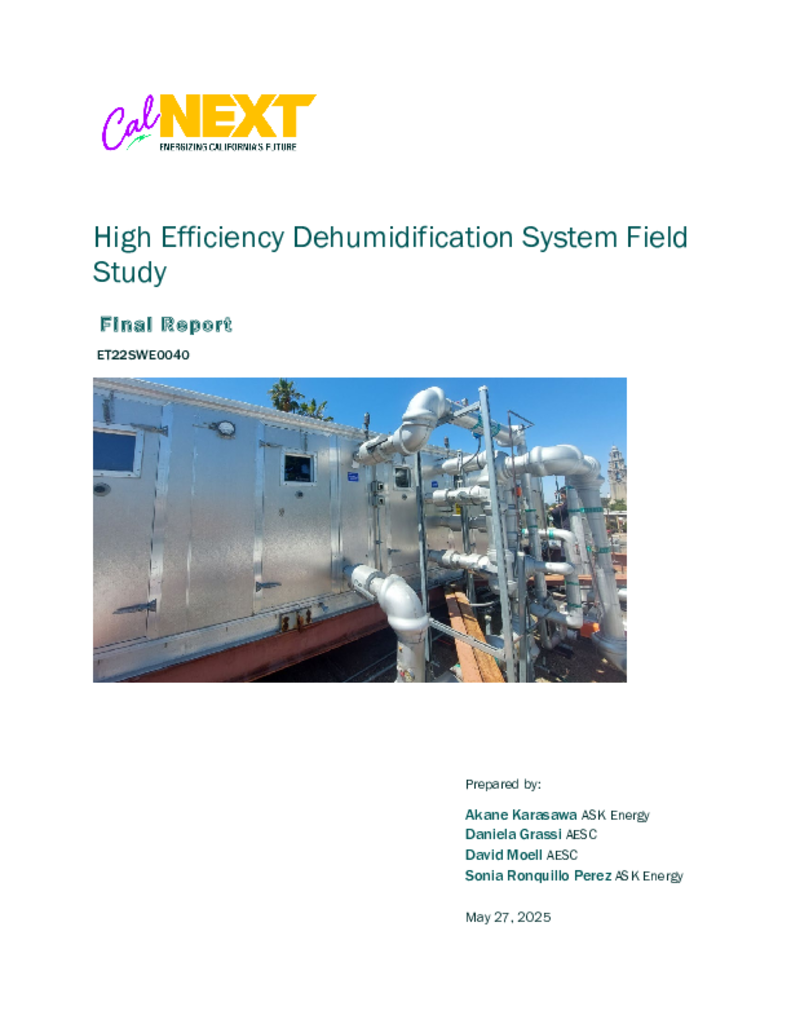ET22SWE0040 - High Efficiency Dehumidification System Field Study
The High Efficiency Dehumidification System (HEDS) technology of interest is a new and patented technology developed in Southern California with energy savings potential for air handlers with chilled water cooling and hot water reheat. The technology was first developed to address dehumidification issues but has evolved to include and leverage energy efficiency benefits. The technology reduces loads on both the chiller and reheat water source by expanding dehumidification and reheat coils, lowering chilled water flows, and utilizing dehumidification coil outlet flow for reheat purposes. This saves energy over the typical baselined design that has separate dedicated, higher flow chilled water and hot water coils.
The technology supports decarbonization and electrification by eliminating the natural gas consumption common in hot water reheat systems (an important component of dehumidification) while also reducing energy consumption at the chiller. The dehumidification aspects also make the technology a good candidate for providing superior protection against COVID and other airborne viruses. The technology is commercially available and most applicable to buildings with humidity concerns such as hospitals, commercial kitchens, museums, and prisons. However, it can be installed at any facility with single duct system with reheat that is often applied in large commercial buildings, public sector facilities, high schools, and universities.
The field test results showed that high efficiency dehumidification systems have the potential to substantially reduce both electricity and gas consumption, as well as the greenhouse gas emissions of any traditional dehumidification system running in constant or variable air volume. To accelerate the market adoption of this technology and help California achieve its energy goals, the project team recommends that utilities should consider this technology for rebates or incentives through an energy efficiency program. Additional work — such as modeling simulations — will likely be required to validate the consistency of the technology’s performance with different air handler unit sizes, climate zones, and building load types to establish the rebate or incentive amount. The technology may also be a key to electrifying dehumidification systems, as it greatly reduces required reheat energy and therefore makes it possible for a system to be retrofitted with heat pumps. A follow-up study to investigate this possibility may help accelerate electrification in sectors that are typically considered difficult to electrify.

